Have you ever looked at certain luxury watch names and wondered where they came from? Some are pretty self-explanatory, like the Rolex Submariner (dive watch) or the IWC Big Pilot (aviation watch), or the Tudor Heritage Chrono (vintage-inspired chronograph). But other not-so-obvious ones beg the question, where did that watch name come from? Think Royal Oak, Gondolo, Milgauss, Radiomir, Pelgaos – there have to be a few interesting stories behind these peculiar monikers. From creative to curious, here are the back-stories on how some famous luxury watches got their names.
Audemars Piguet Royal Oak
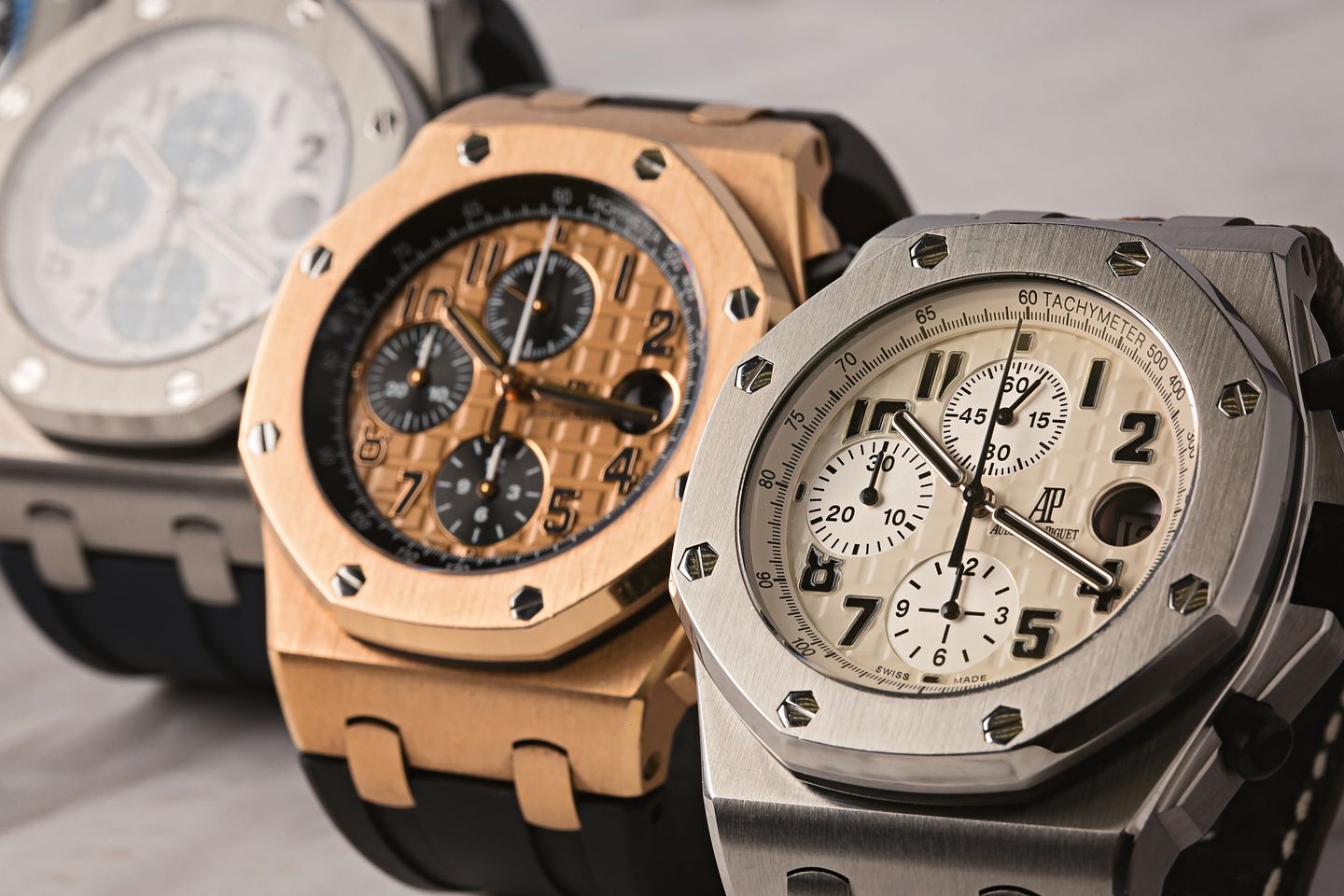
In 1972, Audemars Piguet launched the now-famous Royal Oak. Its designer, Gerald Genta divulged that the groundbreaking design of the watch was, in fact, inspired by vintage diving helmets, complete with the exposed screws on the eight-sided bezel of the watch. And in keeping with the nautical theme and the number eight, the watch is named after HMS Royal Oak – a fleet of eight ships that belong to the U.K.’s Royal Navy.
Breitling Chronomat
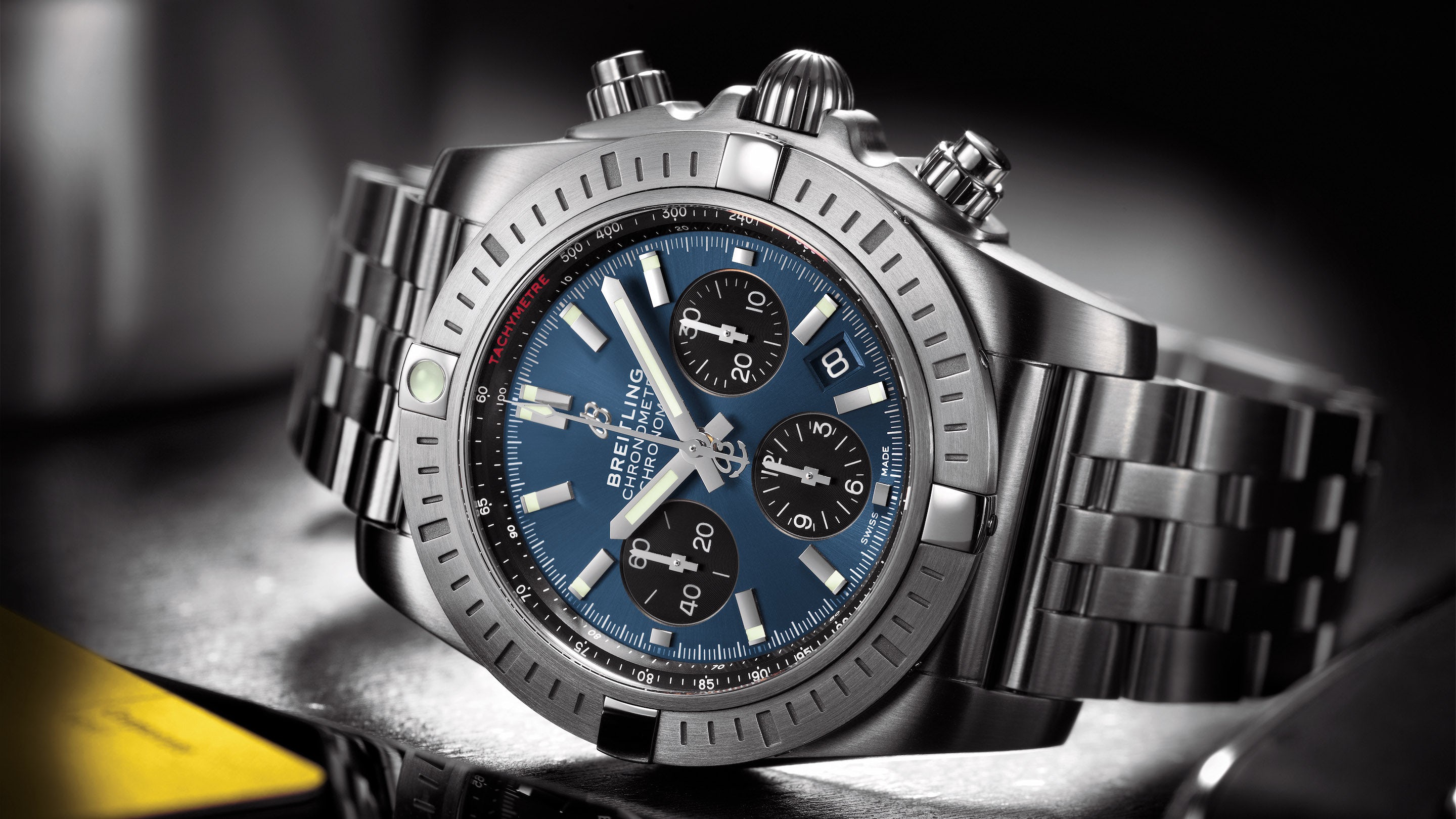
Today, Breitling watches are most associated with aviation. And the brand’s top-selling chronograph, the Chronomat is positioned as a pilot’s watch. However, when Breitling first introduced the Chronomat in 1942, the watch was developed with engineers, scientists, and mathematicians in mind. The watch’s signature feature was a slide rule to facilitate complex calculations. And the name? Chronograph + Mathematics = Chronomat.
Breitling Navitimer
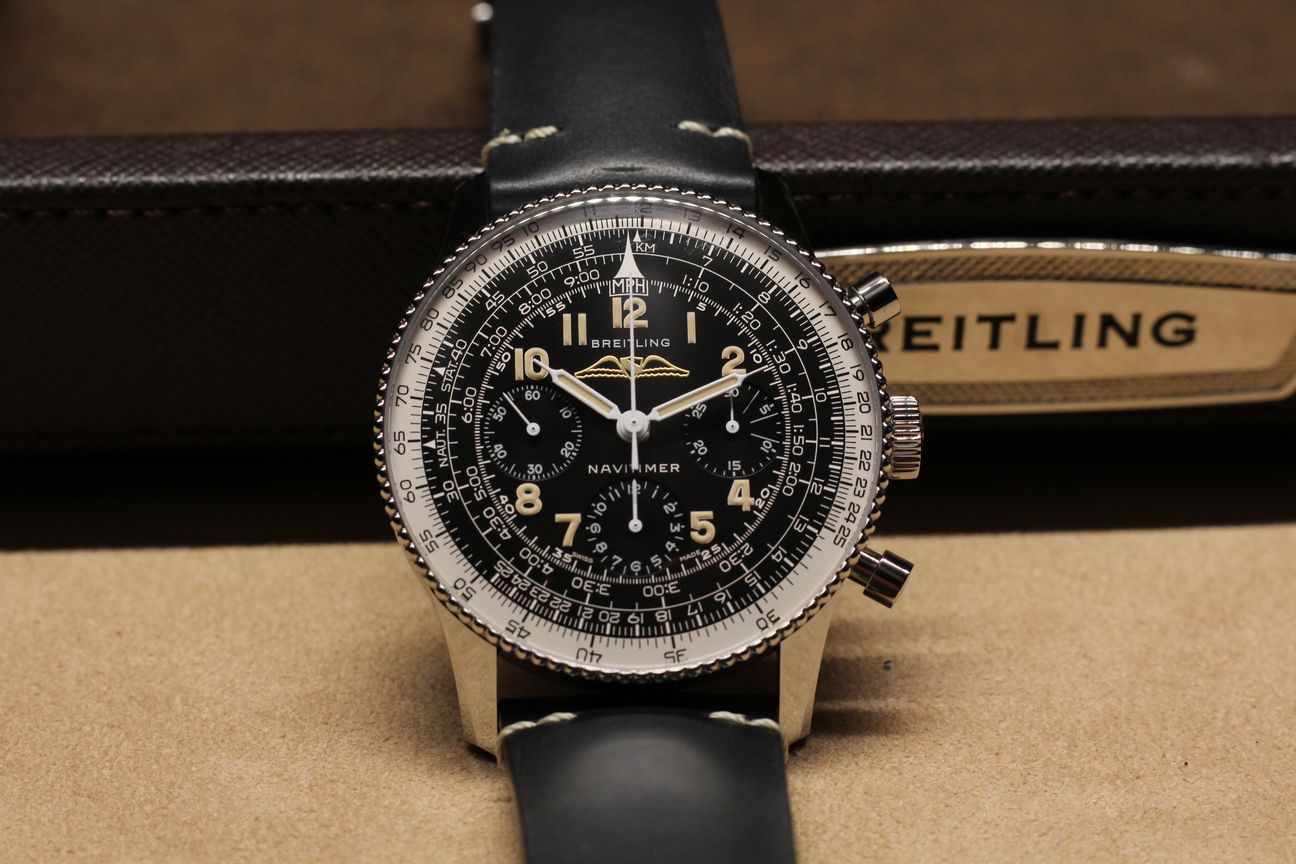
Breitling later incorporated the slide rule into a watch dedicated to pilots, and in 1952, the Navitimer was born. The Navi’s bezel was more complex than that of the Chronomat to permit pilots to calculate fuel consumption, rate of descent/climb, and average speeds during flight (the functions of a manual flight computer). This time, Breitling combined the words “navigation” and “timer” to come up with the name Navitimer.
Cartier Santos

Alberto Santos-Dumont was a Brazilian aviation pioneer based in Paris. In 1904, the pilot complained to his friend, Louis Cartier, that a pocket watch was too impractical to use while flying, since both his hands were busy manning the controls. It wasn’t long after that Louis Cartier sent Alberto Santos-Dumont a wristwatch prototype to wear during flight – establishing the world’s first men’s wristwatch and the world’s first pilot’s watch. In 1911, Cartier Santos watches were sold to the public, built using the design of the prototype, and named after the pilot himself.
Cartier Pasha
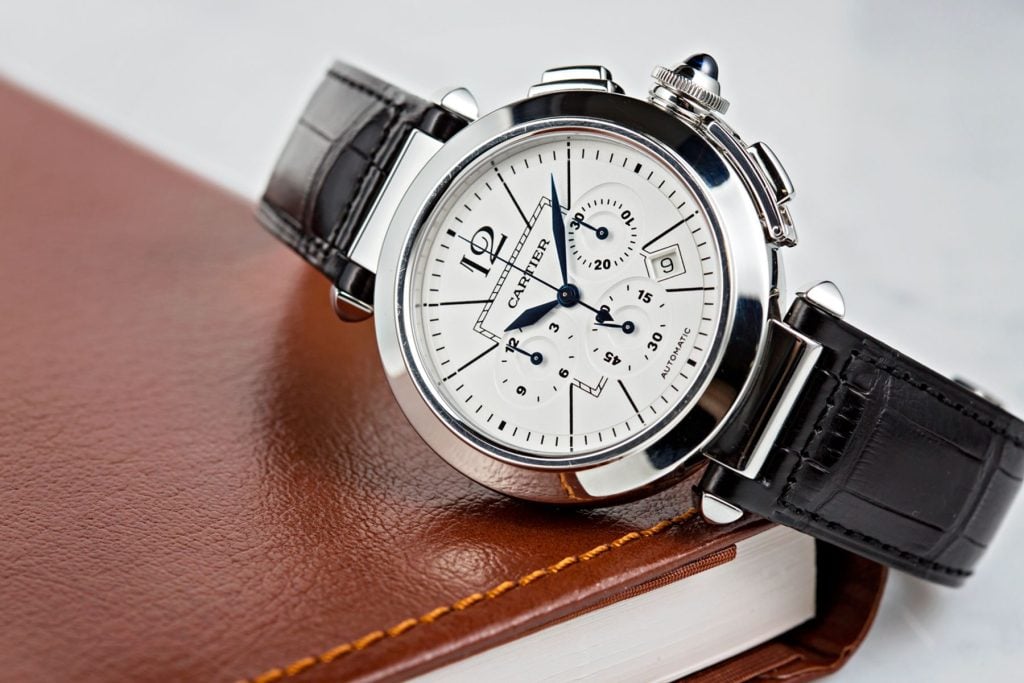
In the 1980s, Cartier released a brand new watch collection called the Pasha de Cartier, designed by none other than Gerald Genta. While the collection was technically new, the design inspiration came from a vintage water resistant Cartier watch originally made in the 1940s for Thami El Glaoui, who was the Pasha of Marrakesh from 1912 to 1956.
Heuer Autavia
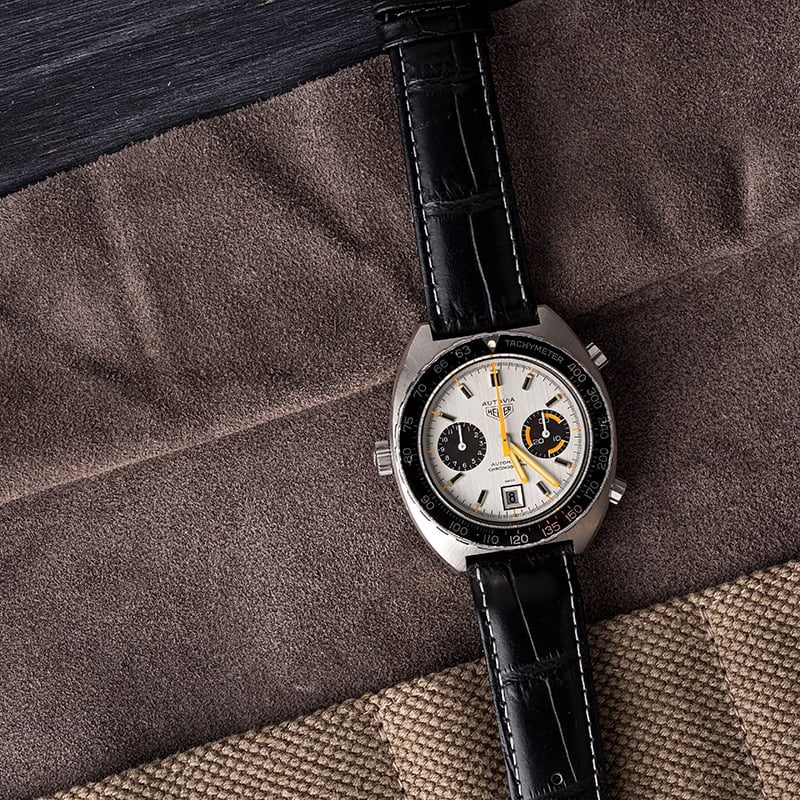
When Jack Heuer took over the family’s business in the 1960s, he set out to make his mark by introducing a slew of new watch models. He kicked things off with the Heuer Autavia chronograph in 1962. While the wristwatch was new, the name Autavia was not – it was taken from Heuer dashboard clocks that were first developed in 1933 for cars and planes. A contraction of the words “automobile” and “aviation“ gave us the name Autavia.
Heuer Carrera
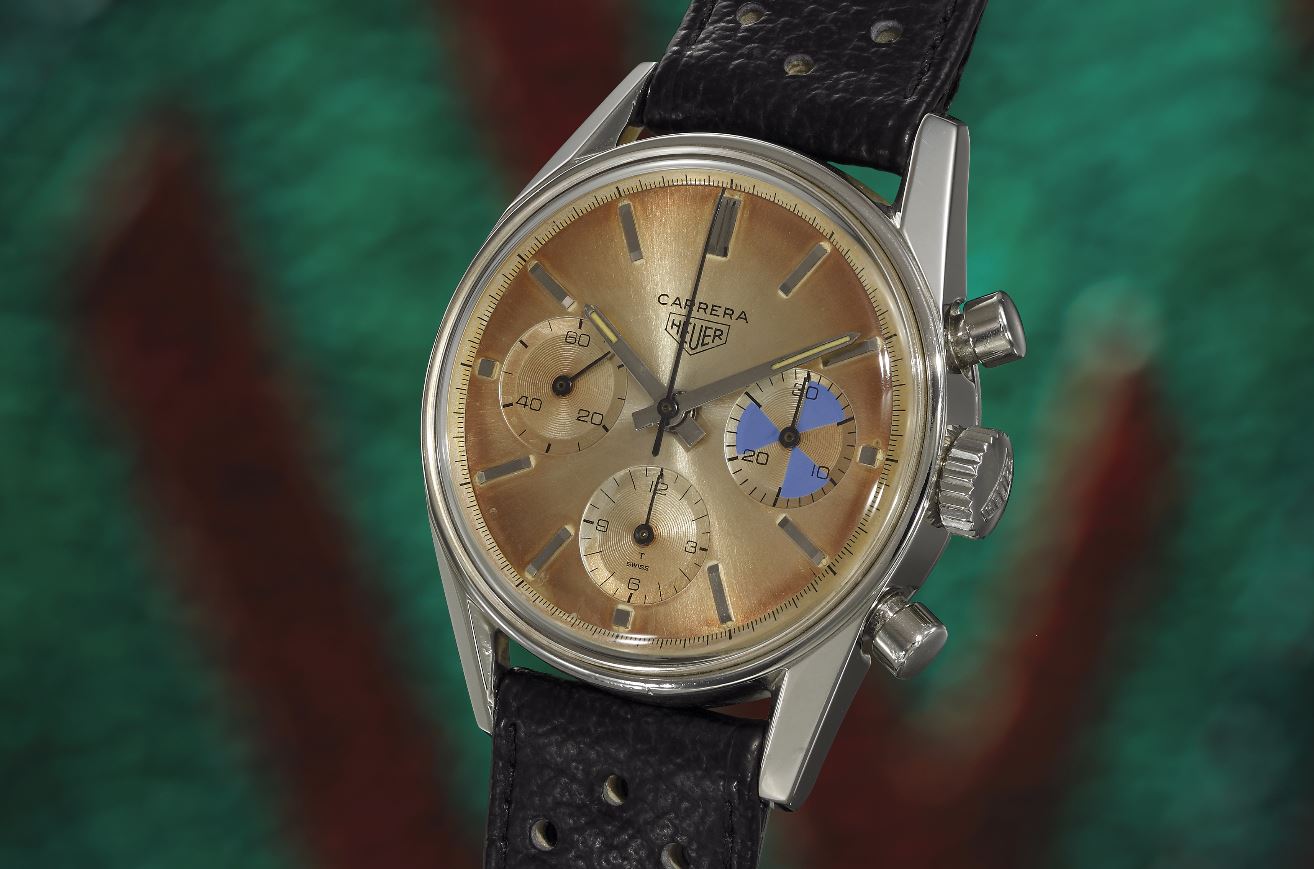
Quickly following in the footsteps of the Autavia chronograph was the Carrera chronograph, which made its debut in 1963. This time, Jack Heuer wanted a new name for the new chronograph, and chose one inspired by the Carrera Panamericana sports car racing event that look place through open roads in Mexico.
IWC Portugieser aka IWC Portuguese
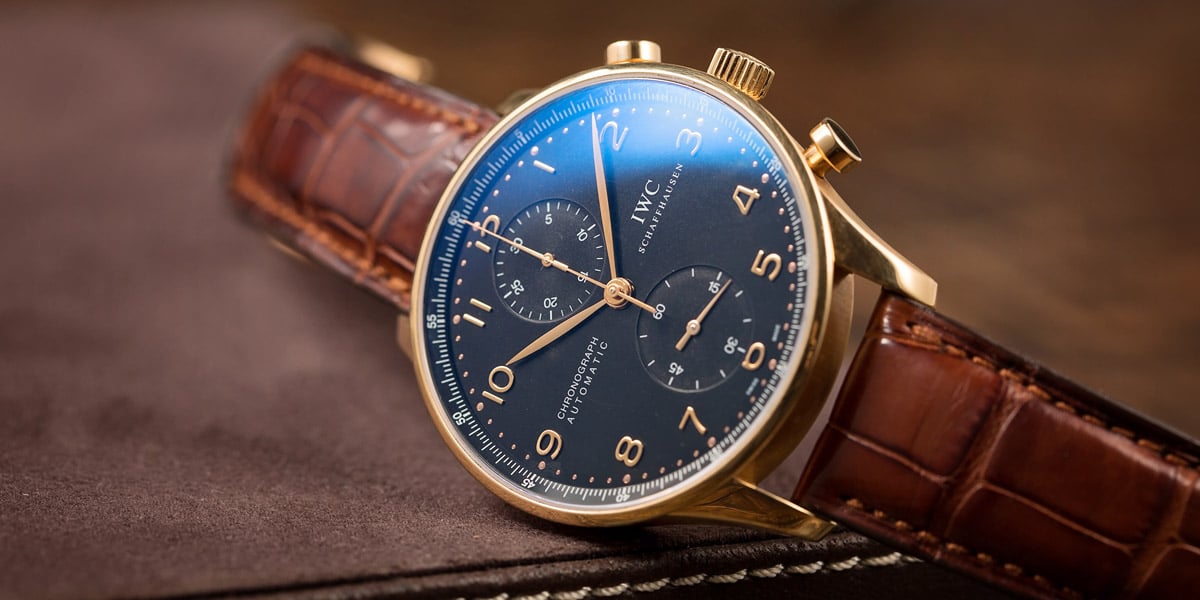
In the late 1930s, Rodrigues and Antonio Teixera, two Portuguese businessmen, had a request for the International Watch Company to produce a wristwatch as precise as a marine chronometer. As a result, the IWC ref. 325 was introduced in 1939 as a large steel wristwatch fitted with a hunter-style pocket watch movement. The company later adopted the name IWC Portuguese for the collection in honor of the two men, and later renamed the collection the IWC Portugieser.
Omega Constellation
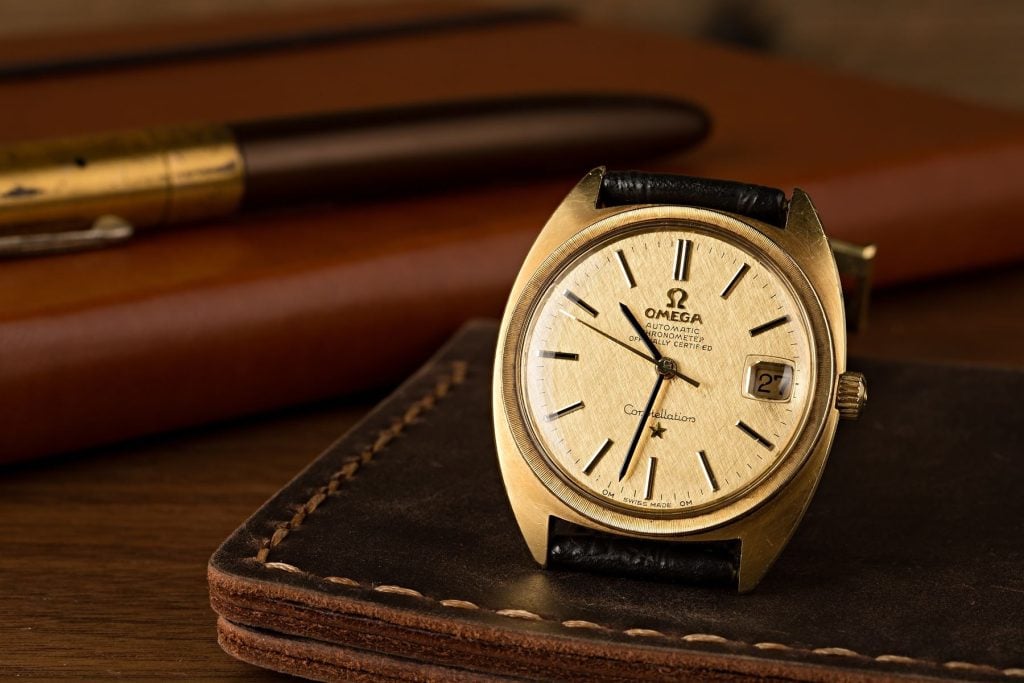
Omega launched the Constellation in 1952 as its first mass-produced collection of chronometer watches. The caseback of the watches featured an image of an observatory dotted with eight stars. The constellation of eight stars represents two chronometer records and six first-place awards that Omega earned between 1933 and 1952—and hence the name, Constellation.
Panerai Luminor
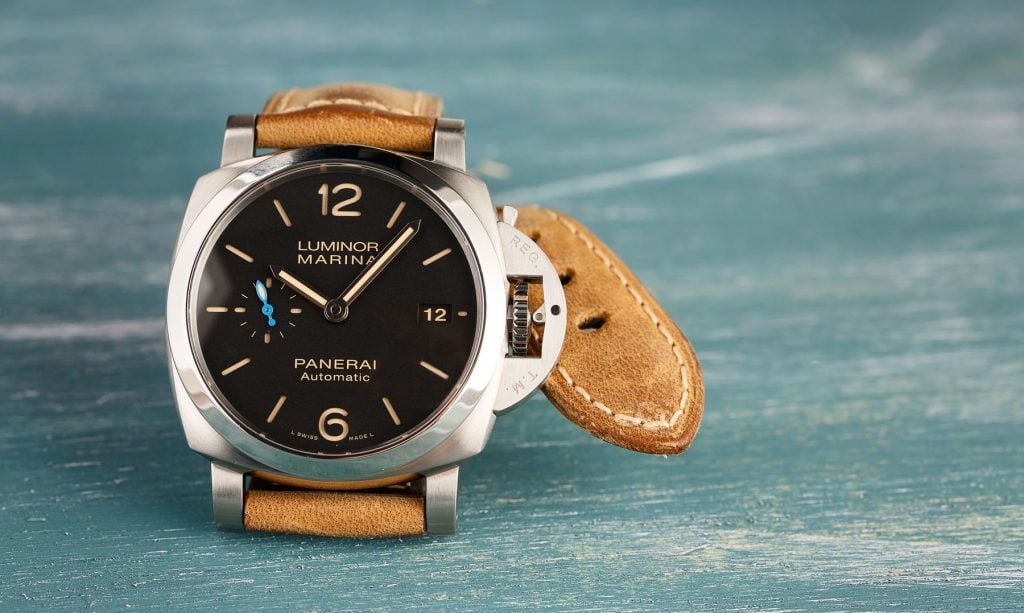
In 1949, Panerai registered another name for luminous paint—this time opting for Luminor. The new (and less scary sounding) name was chosen to avoid the link between luminescent dials and radioactivity as more people were becoming aware of the dangers of radium. (Yet, since the lume was still radium-based, the substance was still dangerous). Similar to other watchmakers, Panerai eventually replaced radium with tritium, which was much less hazardous. Modern-day Panerai Luminor watches, which are defined by thicker lugs and a bridge crown protector, borrow design elements from Panerai watches developed in the 1950s and are named after that company’s second branded lume.
Panerai Radiomir
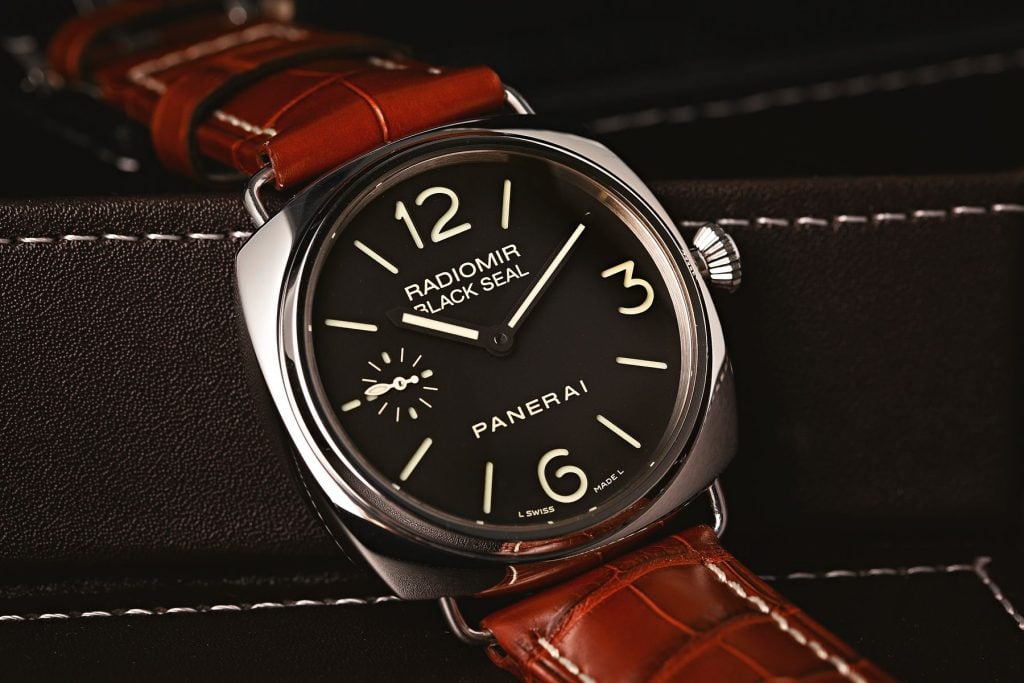
In 1916, Panerai registered a self-luminous radium-based paint under the name Radiomir to use on its watch dials. In 1935, Panerai developed a prototype diving watch for the Royal Italian Navy featuring large cushion-shaped cases, wire lugs, and highly luminescent dials using that Radiomir paint. Modern-day Panerai Radimior watches are designed to look like those prototypes from the 1930s and are named after that patented paint.
Patek Philippe Nautilus

In the mid-1970s, Patek Philippe took a page out of Audemars Piguet’s book and hired Gerald Genta to design a luxury steel sports watch that would compete against the Royal Oak that Genta had designed a few years prior. The freelance watch designer obliged, and in 1976, Patek Philippe unveiled the sporty Nautilus watch. To emphasize the watch’s link to a marine lifestyle, the Nautilus was named after Captain Nemo’s submarine in Jules Verne’s novel, Twenty Thousand Leagues under the Sea.
Patek Philippe Gondolo
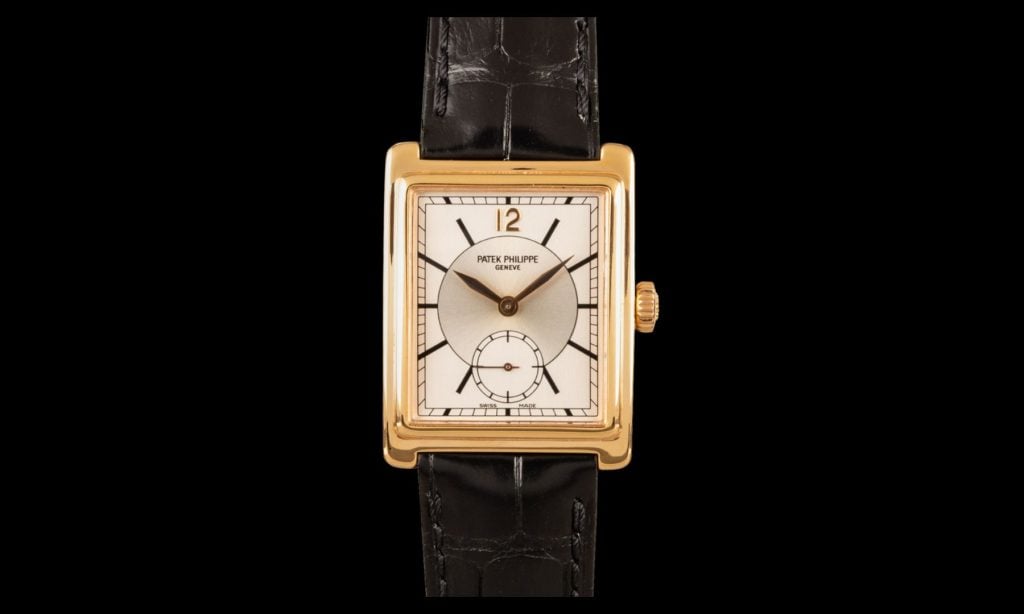
The Patek Philippe Gondolo collection is comprised of the company’s “form” (i.e. not round) watches, and it was officially launched in the 1990s. Yet the origins of the Gondolo name stretches way back to the 1800s. Gondolo & Labouriau was a Brazilian watch retailer based in Rio de Janeiro. and in 1872, Patek Philippe sold them a pocket watch. It turns out that Gondolo & Labouriau was so good at selling Patek Philippe pieces to the local market (thanks in large part to a passionate Patek collectors group that called themselves ‘the Gondolo Gang’) that up until 1927, one third of the Swiss watchmaker’s entire production was allocated to the Brazilian retailer! Among the thousands of timepieces that made the journey from Switzerland to Brazil were plenty of “form” Patek watches with square, rectangular, tonneau, or cushion-shaped cases.
Rolex Milgauss
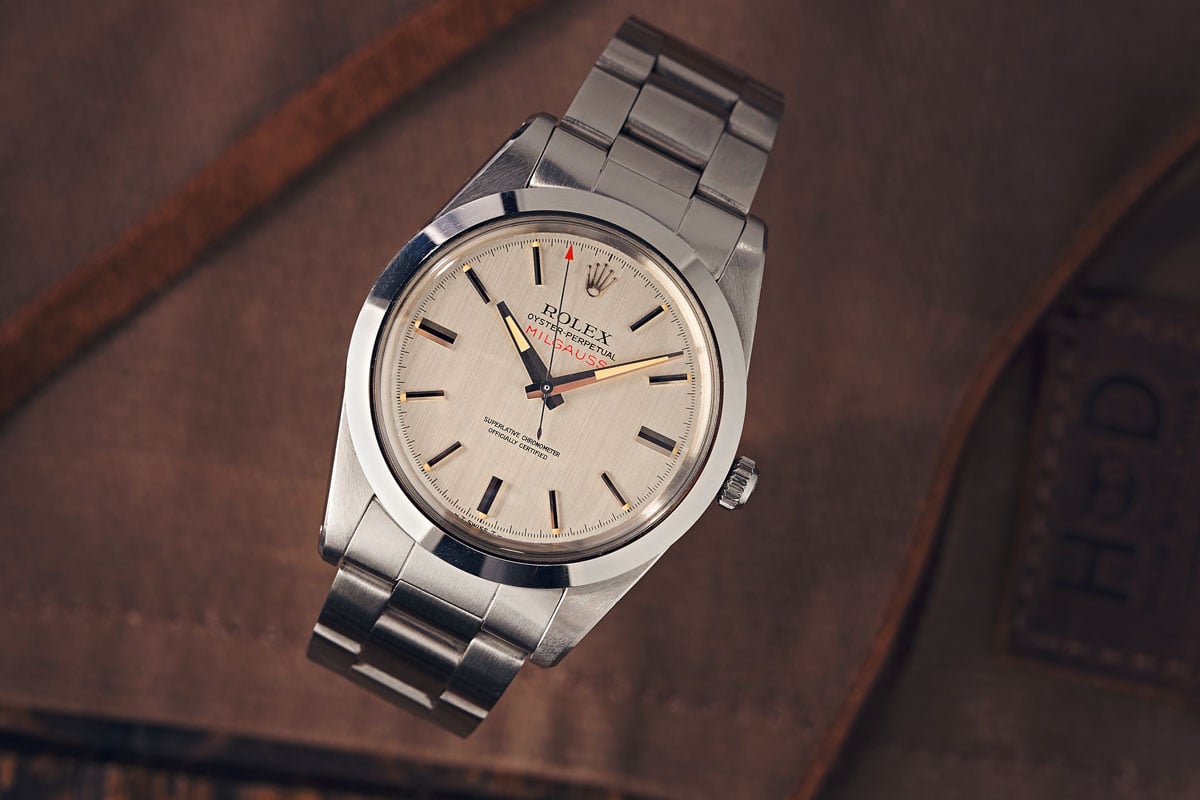
In 1956, Rolex unveiled an antimagnetic watch geared towards the burgeoning scientific community. Since the watch was resistant to 1,000 gauss, Rolex opted to name the watch Milgauss, which is a portmanteau of the French word for one thousand (mille) and the unit of measurement for magnetism (gauss).
Rolex Cosmograph Daytona
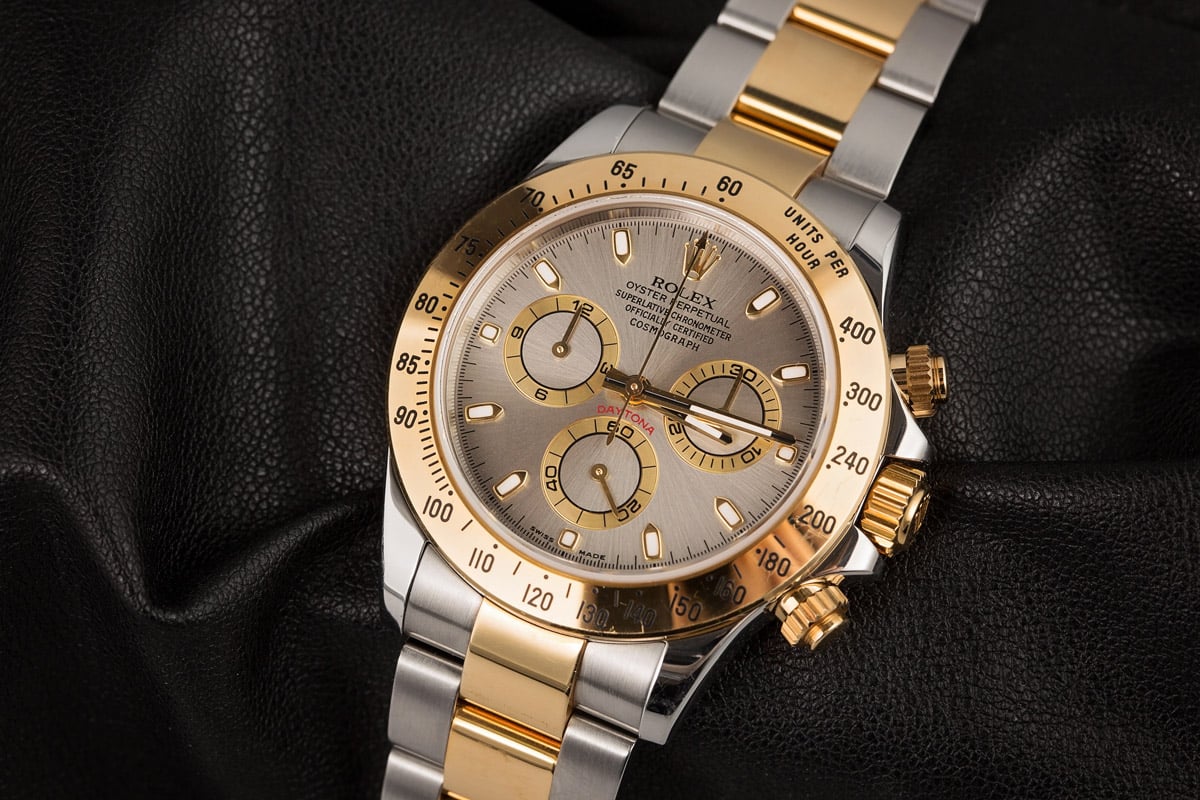
Rolex is no stranger to making up creative names. For instance, in Rolex-speak, two-tone is Rolesor, pink gold is Everose gold, stainless steel is Oystersteel, and ceramic is Cerachrom. And in 1963, Rolex unveiled a new chronograph model they dubbed the Cosmograph in an effort to distinguish it from other brands’ chronographs. However, shortly thereafter, the name “Daytona” joined “Cosmograph” on the dial, thanks to Rolex’s sponsorship ties to the then-recently opened Daytona International Speedway in Florida. Today, the watch is simply known as the Daytona.
Tudor North Flag
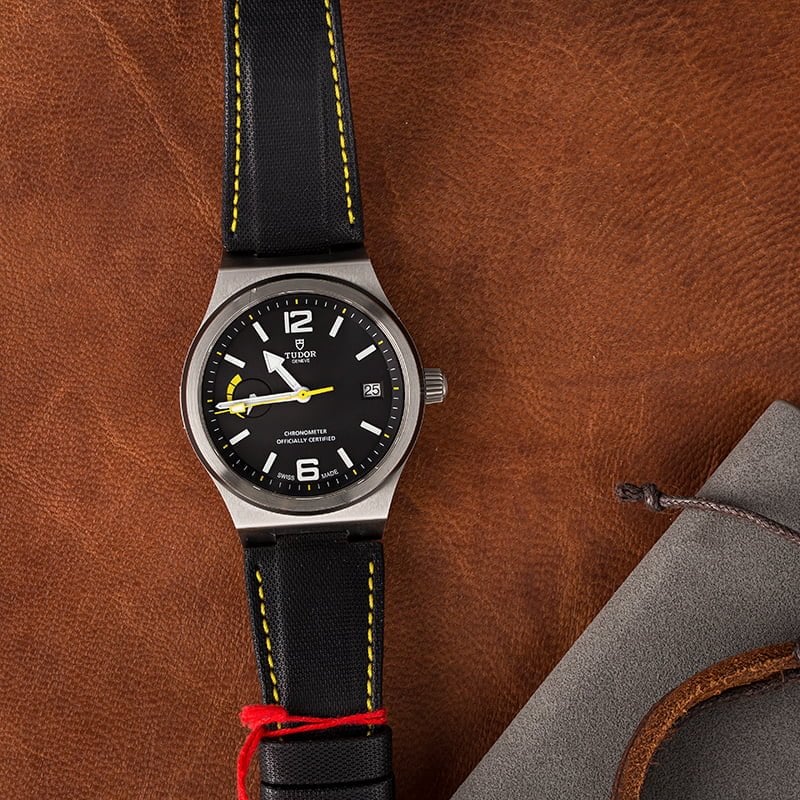
The British North Greenland Expedition (BNGE) was a scientific mission that took place from 1952 until 1954. Hans Wilsdorf, the founder of Tudor, equipped the BNGE crew with Tudor Oyster Prince watches to test out in real-life harsh conditions. (If this story sounds familiar, it’s because Hans Wilsdorf also supplied Rolex Oyster Perpetual watches to the 1953 British Mount Everest Expedition, which eventually lead to the development of the Rolex Explorer watch.) The North Flag debuted in 2015 as the first Tudor watch to use an in-house movement, and it was named in honor of the company’s history with the British North Greenland Expedition.
Tudor Pelagos
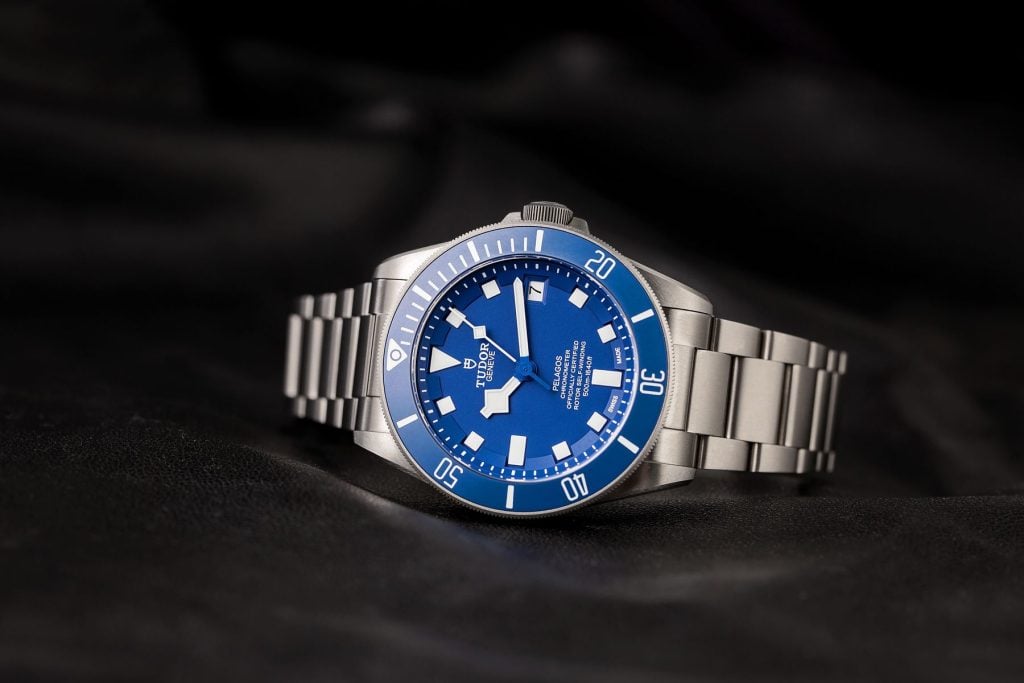
In 2012, Tudor launched the Pelagos, a diving watch that’s water resistant to 500 meters (1640 feet) and fashioned from lightweight titanium. The origin of the name? Pelagos is the Greek word for “open sea,” which is fitting for this super capable diving watch from Tudor. And in case you were wondering, the FXD in Pelagos FXD (a recently released watch made in honor of Tudor’s history with the French Navy) stands for the FiXeD strap bars of the case.
Are there any watch names that stand out to you? What are some of your favorite watch names?
